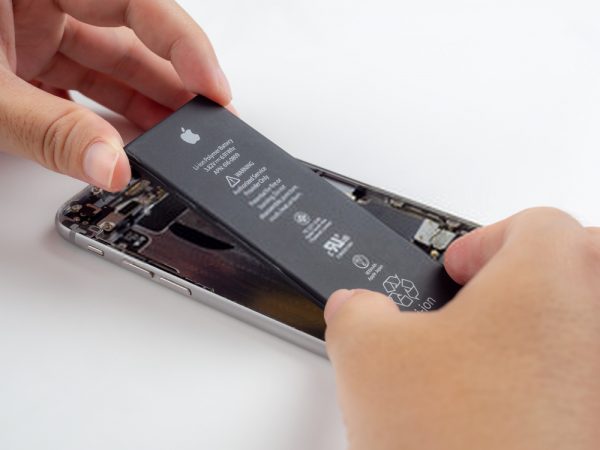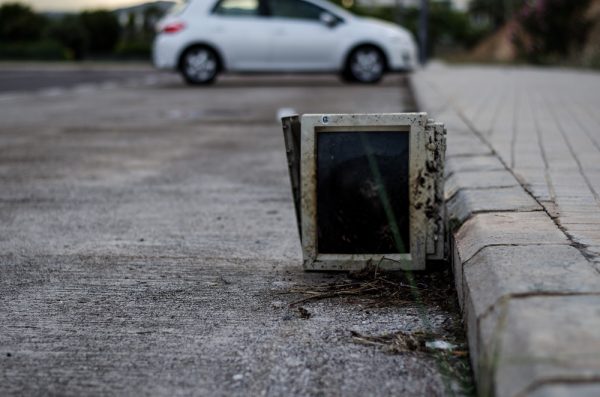Modern technology seems to be growing more efficiently than most people anticipated. We have phones, tablets, and even laptops that can last all day on a single charge. Furthermore, lots of tech products are built with better future-proofing technology than ever. Standards like Wi-Fi 6, 5G, and Thunderbolt are already being mass-produced. However, these improvements also mean that sales can stagnate because consumers will upgrade less often. For that reason (and many others), companies have turned to planned obsolescence to artificially render older products obsolete.
What Is Planned Obsolescence?

Planned obsolescence is a strategy that intentionally causes products to be obsolete after a certain amount of time. It’s the tactic various tech manufacturers use to make sure that they can consistently turn a profit every time they launch new products.
Companies use three different methods to effect planned obsolescence. The first is through manufacturing a better model than the previous product. This makes the older model “outdated” because there’s a newer and better version with all the latest tech. We see this in most smartphone manufacturers that produce new models every year.
The second method is through intentionally designing products to only last in the short term. For example, let’s say a phone manufacturer makes their phone’s battery last only up to three years. Once the three-year period is up, the owner of the phone is forced to upgrade to a new smartphone. This ensures that the company will have a steady stream of sales even in the future.
The third method is by introducing software “updates” that carry malicious lines of code to interfere with core functions and processes. You could potentially see errors like your Bluetooth inexplicably stopping or even your phone displaying the wrong battery percentage.
Planned Obsolescence in Action

One of the best-known examples of planned obsolescence in the tech industry was carried out by Apple. A Harvard University study discovered that certain iOS updates caused older iPhone models’ processing speed to decline. This was very suspicious, as Apple is usually praised for longevity by providing five years’ worth of iOS updates. If these updates did indeed slow down older models, then it sacrificed longevity because consumers would be forced to upgrade.
Of course, this study doesn’t unquestionably prove that Apple is engaging in planned obsolescence. In fact, Apple denied that they were doing this on purpose to drive demand for iPhones. Instead, they claimed that the updates improved battery performance to extend the life of older iPhones.
Nonetheless, Apple had to settle a class-action lawsuit in 2017 after the findings were made public. Part of the issue was because Apple did not disclose to consumers that their devices would slow down. Apple wasn’t transparent about the implications of the iOS updates and, in so doing, deceived their customers.
As a result, Apple had to compensate state governments and consumers over this iPhone planned obsolescence scandal. Moreover, Apple had to lower iPhone battery replacement prices for a short period. They also later released an iOS update so that consumers could assess their iPhone battery’s health.
After all of that, you would think Apple discontinued this practice that can easily be associated with planned obsolescence. However, it has continued slowing down older iPhones, from the iPhone 6 to the iPhone XS. The only difference is that it only happens when the iPhone’s battery starts degrading. To further deflect blame, iOS updates now come with a disclaimer if an update could potentially affect performance.
More Than Just Apple
There’s more we can say about the planned obsolescence Apple engages in. For instance, there was a bit of skepticism when Apple announced an iPhone Trade-In Program. This allowed customers to trade in their old iPhone yearly and upgrade to a new one, with a new plan. For many, this signaled a deliberate attempt to stimulate demand and sales while using planned obsolescence for older models.
However, while Apple is at the forefront of planned obsolescence in tech, it isn’t the only company guilty of it. For example, in 2018, both Apple and Samsung were penalized by the Italian government for planning obsolescence.
The planned obsolescence Samsung engaged in was allegedly very similar to Apple’s, where its software updates led to slower smartphone performance. The company also did not disclose what the user would get into if they downloaded the new updates.
On the flip side, all other Android smartphone manufacturers engage in some form of planned obsolescence as well. That’s because they release new models of the same product annually. Moreover, they also only release major software updates for up to three years. Afterward, you’ll get no support for your phone, and manufacturers leave you to fend for yourself.
Planned Obsolescence in Hardware

Planned obsolescence is far from limited to just software updates. It also happens with hardware decisions in products, whether inherently or through newly introduced models.
For example, most modern smartphones don’t include replaceable batteries like the ones you see in older smartphones. Once your smartphone battery dies, your whole smartphone dies and you need to replace it. This is one of the reasons why the average smartphone life cycle is only two to three years.
Also read: 15 Best Phones With Removable Battery
Furthermore, repairing most smartphones is nearly impossible because of how the manufacturer made them. Customers can’t repair the devices themselves because manufacturers glue most components to the body. Furthermore, some devices use proprietary parts, like the iPhone’s special pentalobe screws that you can’t unscrew with regular screwdrivers.
Even if you could repair and refurbish old devices, resale isn’t always possible. That’s because of the walls set by manufacturers’ service agreements and licensing. All of these work together to enact planned obsolescence, whether companies admit it or not.
Planned obsolescence does not stop in the smartphone industry, either. Other industries like the printer manufacturing industry also use the same strategy. According to EU research, printers have only five hours and four minutes of printing time before they die out. Products like wireless headphones/earphones, kindles, and tablets have very short lifespans as well.
Reception & Implications
It’s no secret that profit is the primary motivator for planned obsolescence. Companies want to make sure that products die out so that consumers are compelled to buy the more expensive ones. Also, once companies trap users within an ecosystem, customers are more likely to purchase from the same brand.
All of these sound like sinister and corrupt capitalism at its peak. However, as surprising as it may be, planned obsolescence is not always negative. There are a host of downsides, yes, but there are also silver linings. Let’s talk about the implications and different perspectives regarding planned obsolescence, both good and bad.
1. Consumer Response
It’s unsurprising that when most consumers find out about planned obsolescence, they immediately have a negative response. After all, it seems malicious when brands stimulate demand for the sake of profit. It also means that customers don’t get to use products to their fullest potential, generating unnecessary expenses for upgrades.
As a result, when a brand is associated with planned obsolescence, they sacrifice their reputation. That’s especially true if newer models only provide incremental improvements. In the end, planned obsolescence turns many customers away from the brand.
2. Cost Control

Conversely, planned obsolescence doesn’t only happen when companies want to drive demand. Sometimes, it’s a means of cost control, because cheaper parts with shorter life spans mean cheaper retail prices. This is most prominent in mid to low-end devices that strive to keep costs low to stay competitive.
In this sense, people excuse planned obsolescence because there’s a legitimate purpose for it. The best components come with a hefty price, after all, so it’s understandable. Moreover, if every company only made flagships, not everyone would be able to afford consumer tech. In that case, consumer technologies will become a luxury item instead of an accessible product for the masses.
3. Technological Progress and Innovation
One of the biggest potential arguments for planned obsolescence is how it stimulates progress and innovation. If companies made one product with a long life span, people would upgrade less often. As a result, manufacturers’ income will deplete, eventually forcing them to close because they can’t afford to keep operating. This would stop innovation and technological progress altogether.
On the flip side, even if companies did survive with lower sales, there wouldn’t be much incentive to innovate. Companies are driven by profit, and because of that, technology rapidly improves within just a few years. There’s a big push for research and development to create better products. They need to innovate as often as possible to ensure they have yearly customers and sales. This naturally leads to annual upgrades and, sometimes, technological breakthroughs.
As a result, planned obsolescence through annual updates becomes almost inevitable. With better technologies in software, older hardware naturally becomes outdated. It’s the reason why you can’t run 4K triple-A games on an old PC running Windows XP from 2001. Current software won’t run on older hardware because they’re no longer compatible.
4. Environmental Damage

Unfortunately, one of the ugliest byproducts of planned obsolescence is environmental damage. As people purchase newer products and render old ones obsolete, we face the problem of dealing with e-waste.
Of course, some people do resell their devices or trade them with manufacturers through trade-in programs for recycling. However, not all companies accept trade-ins to recycle old products. Furthermore, some devices are so outdated that you cannot resell them anywhere.
Thus, many people choose to stuff old devices in drawers or throw them away. As a result, we’ve seen a growing amount of e-waste in landfills. In fact, global e-waste amounted to over 50 million tonnes in 2019 alone, with only 20% deemed recyclable.
Also read: Where You Can Sell Your Old Phone at the Best Price
The Future of Planned Obsolescence
While planned obsolescence does have its uses, it’s still largely problematic. That’s because of the dishonesty of the practice and the amount of waste it creates. Recycling through trade-in programs may be part of the plan for companies like Apple and Amazon, but this isn’t enough since only a small fraction of obsolete hardware can be recycled.
With that said, without proper regulation or legislation, planned obsolescence will continue to remain in our manufacturing industries. Thankfully, governments have finally come together to take the next steps in regulating planned obsolescence.
With both the people and governments taking action, we have hope that planned obsolescence and its consequences will stop. Only time will tell whether or not these efforts will bear fruit.
